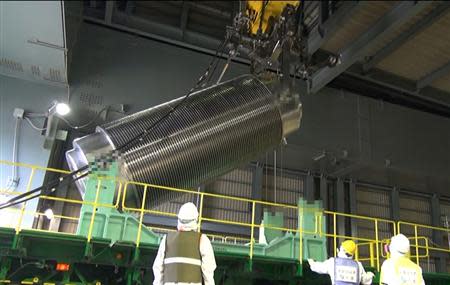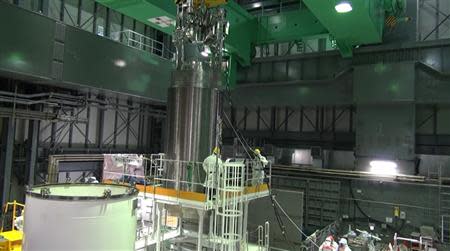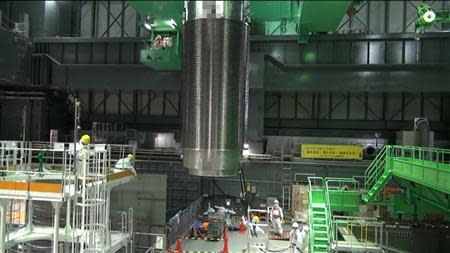In start of long operation, Fukushima removes first fuel rods
TOKYO (Reuters) - The operator of Japan's wrecked Fukushima nuclear plant completed on Thursday the removal of the first fuel rods from a cooling pool high up in a badly damaged reactor building, a rare success in the often fraught battle to control the site. The batch of 22 unused fuel assemblies, which each contain 50-70 of the fuel rods, was transferred by a trailer to a safer storage pool, the last day of a four-day operation, Tokyo Electric Power Co, or Tepco, said in a statement. The company must carefully pluck more than 1,500 brittle and potentially damaged assemblies from the unstable reactor No.4., the early stages of a decommissioning process following the 2011 earthquake and tsunami that wrecked the site. Tepco estimates removing the damaged assemblies from reactor No.4 alone will take a year. Some experts say that timeline is ambitious. Still, it is an urgent operation. They are being stored 18 meters (59 feet) above ground level in a building that has buckled and tilted and could collapse if another quake strikes. Carefully plucking the damaged fuel assemblies from the reactor building is being seen as a test of Tepco's ability to move ahead with decommissioning the whole facility - a task likely to cost tens of billions of dollars and take decades. The removal has to be conducted under water. If the rods are exposed to air or if they break, huge amounts of radioactive gases could be released into the atmosphere. Each assembly weighs around 300 kg (660 pounds) and is 4.5 meters (15 feet) long. The hazardous removal operation has been likened by Arnie Gundersen, a veteran U.S. nuclear engineer and director of Fairewinds Energy Education, to trying to pull cigarettes from a crushed pack. Tepco started the operation on Monday, slowly pulling the assemblies out of the submerged racks by crane, before transferring them to a heavy steel cask, designed to shield workers from radiation during the operation. The cask was transported to a building housing the station's common pool, which Tepco says wasn't damaged in the quake or tsunami, where they will be deposited. Tepco will review the process before starting the removal of the next batch, it said in a statement. Extracting spent fuel from the plant's other reactors, where radiation levels are much higher because of core meltdowns, will be even more challenging. Tepco has floundered for more than two and half years with rising levels of contaminated water that comes from its jerry-rigged cooling system for the melted reactor cores, power failures and water leaks that have led the government to step in an take a more active role. (Reporting by Aaron Sheldrick; Editing by Neil Fullick)



